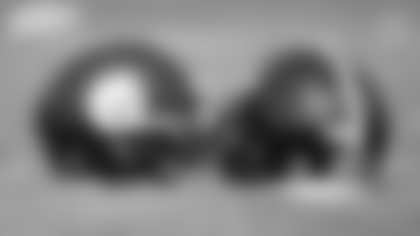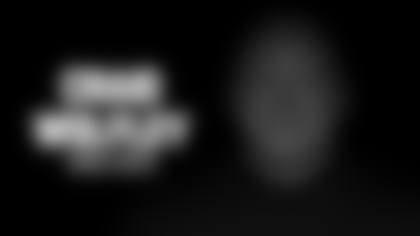Photo Gallery: Super Bowl IX
The Seattle Seahawks are Super Bowl XLVIII champions, and the manner in which they earned their Lombardi Trophy came as the result of a dominating victory over the Denver Broncos. The Great Peyton Manning's Broncos. The Denver Broncos that employed the NFL's dominant offense of the 2013 NFL season, a unit that ranked either first or second in the league in 10 significant categories during the regular season.
The Seahawks' domination of Denver's offense was complete. Four takeaways, one of which ended up in the end zone. Only one touchdown allowed, and that came in garbage time. Seattle's defense made Manning look a guy who should retire, it shut down the running attack, pushed around the offensive line, bullied the receivers. It was an all-time performance.
As such, and because this is now a 24/7/365 media world in which we live, it didn't take long for the comparisons to begin. The 2013 Seattle Seahawks, the 1985 Chicago Bears, the 2000 Baltimore Ravens all were being talked about in the same reverential tones. Even during the sessions in which some unqualified talking head was charged with ranking the greatest of the great defenses, it was done respectfully and with many bouquets thrown at the ones not chosen.
But don't forget the 1974 Pittsburgh Steelers.
The 2013 Seahawks proved they are deserving to be in any conversation regarding the best defensive performances in leading a team to a Super Bowl championship, and the 2000 Ravens and 1985 Bears are deserving as well.
So are the 1974 Steelers.
All four of these teams led the NFL in defense in their year, and the Steelers' 52 sacks and 25 interceptions accumulated in a 14-game season are evidence of their potential for creating mayhem. With 64 sacks and 34 interceptions, the 1985 Bears set the standard here, with the 2013 Seahawks posting 44 sacks and 28 interceptions, and the 2000 Ravens checking in with 35 sacks and 23 interceptions. Comparable statistics, certainly.
As for what happened specifically in the Super Bowl, the scoreboard shows the Seahawks winning by 43-8 over the Broncos; the Ravens by 34-7 over the New York Giants; the Bears by 46-10 over the New England Patriots; and the Steelers by 16-6 over the Minnesota Vikings. But this discussion is about defense, not margin of victory.
Last Sunday at MET Life Stadium, the Seahawks defense had four takeaways, one of which was returned for a touchdown, and no sacks while allowing only 27 yards rushing. But the Broncos did manage one garbage time touchdown that came on a six-play, 80-yard drive. The Seattle defense also scored that opening-play safety.
The Ravens had four sacks and five takeaways in Super Bowl XXXV, one of which was returned for a touchdown, while allowing no offensive touchdowns, no field goal attempts, and no red zone penetrations. The Giants' touchdown came on a return of the second half kickoff.
The Bears had seven sacks and six takeaways, one of which was returned for a touchdown, plus a safety in Super Bowl XX. They allowed only 7 yards rushing and 123 yards in total offense. The Patriots scored on a 36-yard field goal that was set up by a recovered fumble at the Chicago 19-yard line, and then on a 12-play, 76-yard touchdown drive in garbage time.
In Super Bowl IX, the Steelers had no sacks, five takeaways, and they scored a safety. They allowed 17 yards rushing on 21 attempts – the NFL still was a running league – and they complemented that by allowing only 3.9 yards per pass play. The Steelers allowed no offensive touchdowns, and the closest the Vikings came to scoring was a 39-yard missed field goal in the second quarter following a fumble recovery at the Pittsburgh 22-yard line. Minnesota had 13 total offensive possessions, and those ended this way: punt, punt, punt, punt, missed field goal, safety, interception, punt, interception, punt, fumble, interception, end of game
Now, factor in the competition.
The Bears demolished a Patriots team quarterbacked by Tony Eason, an offense boasting Craig James as its primary weapon as a runner/receiver out of the backfield. Remember, in 1985, Irving Fryar was only a second-year pro who had 50 career catches as a part-time receiver. The Patriots' offense finished 10th in the 28-team NFL in scoring, and the best player it put on the field that day was a guard in the final game of his 13-year career – John Hannah, Hall of Fame Class of 1991. Starting for the Bears that day were three future Hall of Fame players – Dan Hampton, Richard Dent, and first-ballot selection Mike Singletary.
The Ravens were presented with a Giants team quarterbacked by Kerry Collins, a unit, like New England's, boasting a dual-threat running back – Tiki Barber – as its primary weapon. In 2000, the Giants finished 15th in the NFL in total offense, 13th in passing offense, 11th in rushing offense, and 15th in points scored. There were 31 teams in the NFL at the time. Starting for the Ravens that day were a pair of future first-ballot Hall of Fame players – Ray Lewis and Rod Woodson.
The Seahawks faced The Great Peyton Manning, in every sense of what that particular challenge is in 2013, a year in which Manning set NFL all-time single-season records in passing yards and touchdowns. The Broncos were No. 1 in the NFL in red zone efficiency (76.1 percent) on a ridiculous 51 touchdowns in 67 possessions, and their 606 points broke by 17 what was the existing NFL single-season record, and worked out to an average of 37.9 per game. Any potential Hall of Fame players coming from this Seattle defense is an unknown.
The Steelers got a Vikings team that finished the 1974 season ranked fifth in total offense, second in passing offense, 15th in rushing offense, and fifth in points scored. The Minnesota quarterback was Fran Tarkenton, Hall of Fame Class of 1986, whose 1974 found him ranked sixth in the NFL in passer rating, third in completions, second in yards per game, and sixth in touchdowns. Halfback Chuck Foreman was tied-for-third in the NFL in rushing touchdowns, and was fourth in yards from scrimmage. Starting wide receivers John Gilliam and Jim Lash averaged a combined 20.4 yards per catch. The starting left tackle was Ron Yary, Hall of Fame Class of 2001. And among the Steelers' starters on defense that day were four future first-ballot Hall of Fame players – Joe Greene, Jack Ham, Jack Lambert, Mel Blount – all of whom were in their primes.
"The most dominant defensive performance in a Super Bowl" forever will be an open-ended discussion, one with no right answer, and not even with any definitive criteria through which to arrive at a right answer.
But whenever this discussion is had, the 1974 Pittsburgh Steelers deserve to be in the conversation.














